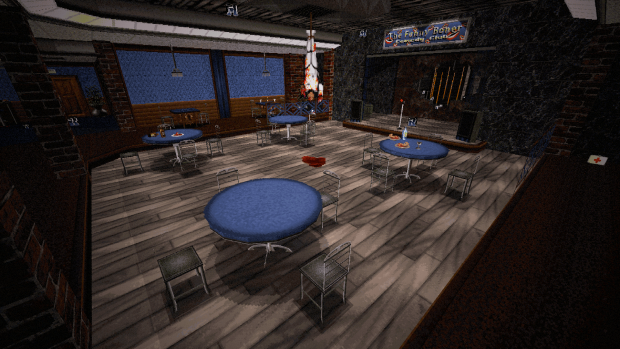Brahma is a 3D game engine with a rather retrofuturistic design, intended for small studios and solo developers. It's being written from scratch in C++ using standard Windows API and no third-party libraries. This technology introduces an entirely new class of low-latency real-time engines that make special timing requirements, treating frames as video fields with a target time budget of 2-4 ms each, down from 16-33 ms frame budgets normally seen in game engines. It evolves in a different way than other modern engines, rejecting conventional BSP, Z-buffer, floating-point coordinates, and most of the lame screen-space effects in favor of innovative and efficient techniques. The engine is non-Euclidean capable to some degree; also it supports true displacement mapping for sectors as a means to virtualize geometry that affects collisions. The engine is also carefully designed to be easy and convenient to develop for, yet versatile and adaptive to any needs.
Implemented some post-effects today. The noise is based on a simple PRNG and color addition/subtraction look-up tables. Now it adapts to your screen resolution and refresh rate retaining a constant temporal-spatial magnitude, not just increasing with the camera sensitivity like my previous attempts.
My vignetting effect now models the cos^4 law (cosine fourth) using a small look-up table to speed up processing. It mimics the true vignetting that naturally occurs in real optical systems. Accordingly, it's greatly affected by camera field of view, producing tunnel vision on extreme zoom out.
All the post-processing is done in a single pass and takes an extra 1 ms for a 1920 x 1080 frame on average.







This looks really great! Simple yet so very effective!